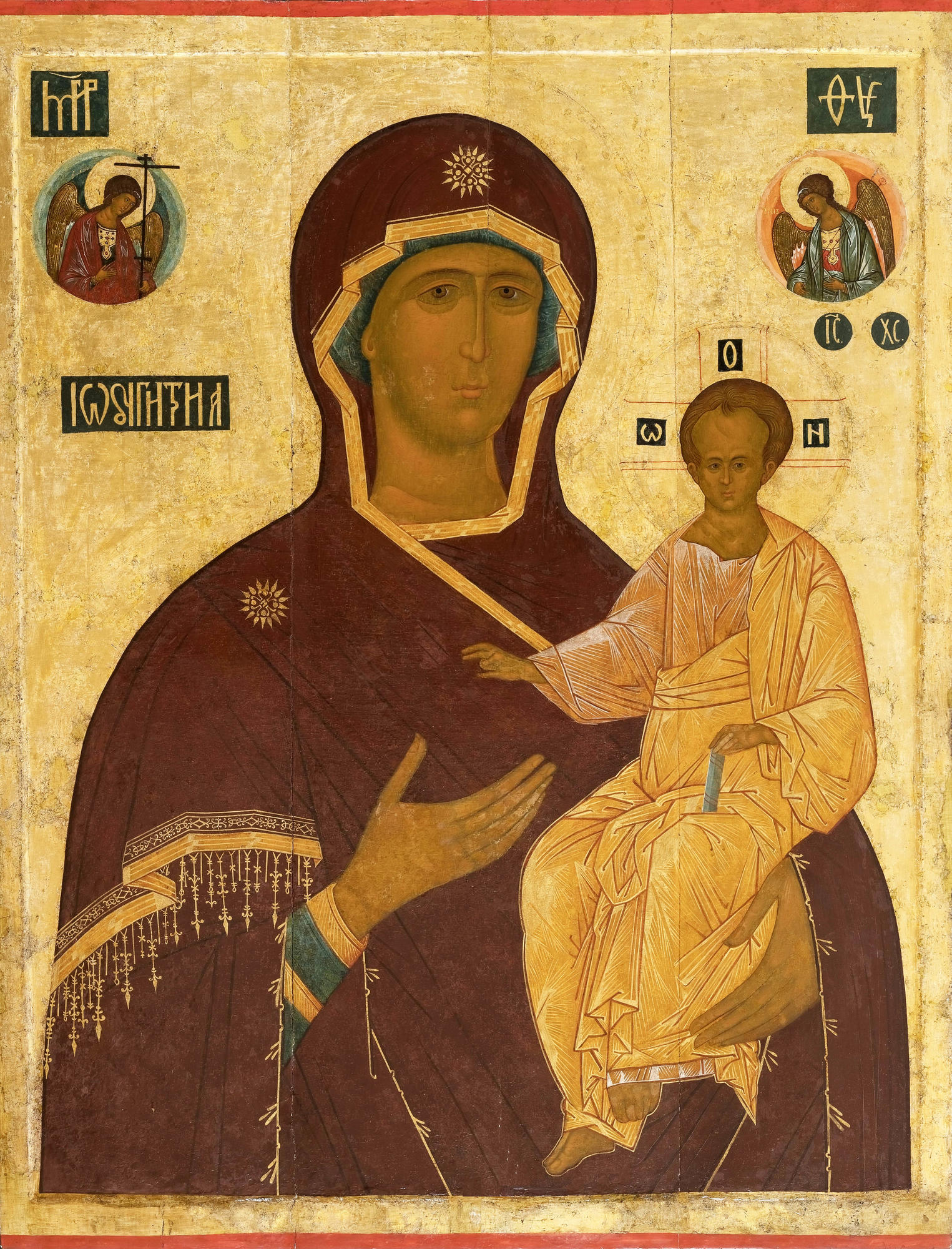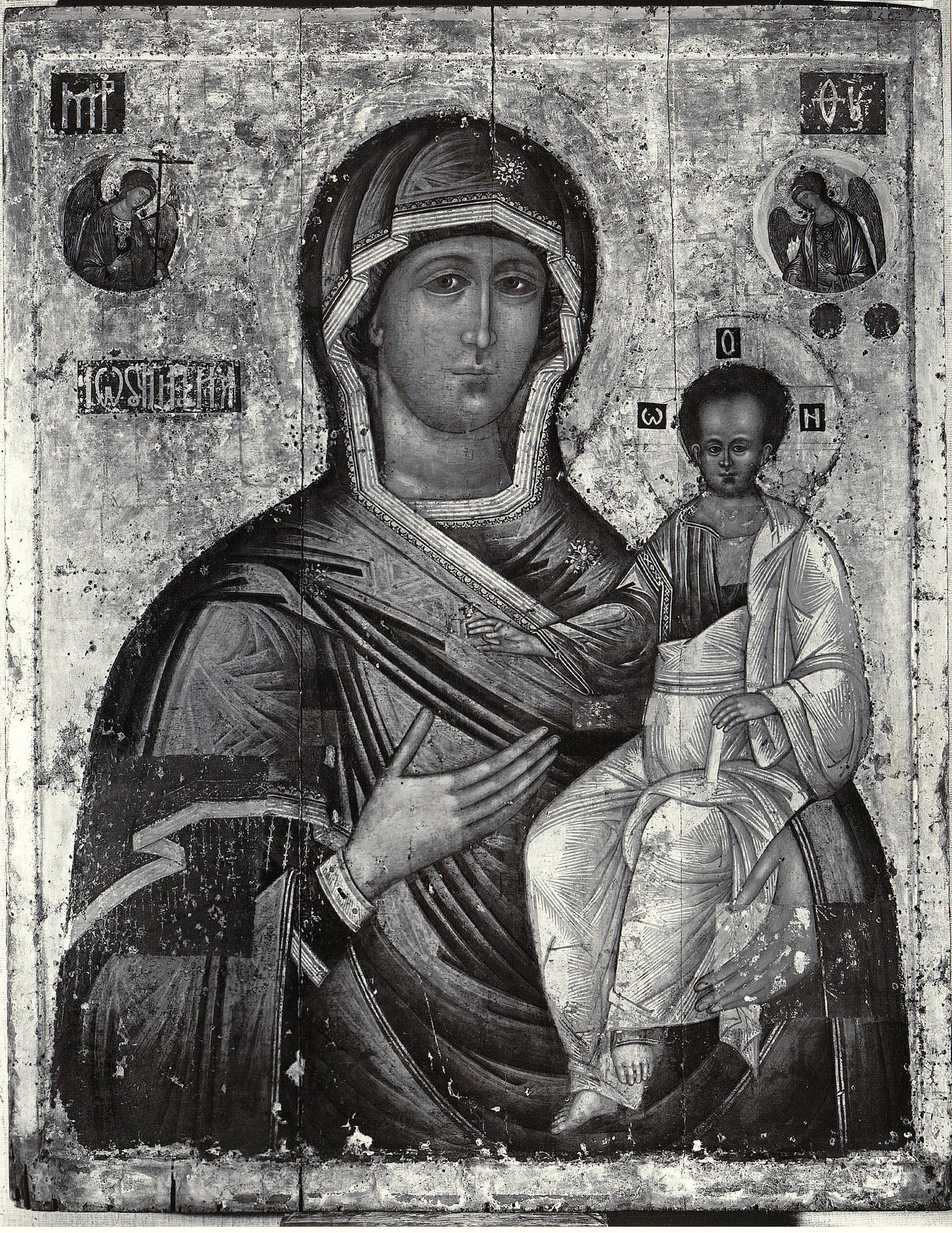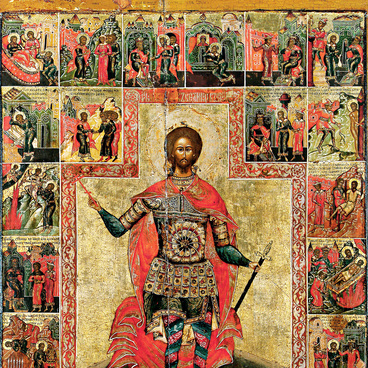The icon Hodigirtia was created in the first half of the 16th century by an unknown Moscow iconographer. The Greek word Hodigirtia means ‘Showing the Way’. This is one of the oldest and most common icons of the Virgin. A distinctive feature of the Hodigitria type is the frontal position of the Baby, who solemnly sits on the left hand of the Mother of God. Her right hand points to Christ as the Savior of the human kind. The name of this type goes back to the miraculous icon, which was kept in the Odigon Monastery of Constantinople. It was venerated as an image written by Luke the Evangelist himself.
In Russia, several icons of Hodigitria were venerated. The most famous of them was the Smolensk icon. As the legend has it, Princess Anna, who was married to Grand Prince Vsevolod Yaroslavich, brought it from Constantinople in 1046. In 1101, the son of Anna and Vsevolod – Vladimir Monomakh put this image in the Assumption Cathedral of Smolensk.
At the beginning of the 15th century, the Smolensk icon was taken to Moscow. In 1456, it was returned to Smolensk. At this time, its replica was made; it was kept in the Annunciation Cathedral of the Moscow Kremlin. In 1525, this replica was transferred to the Novo-Devichi Convent, which was founded by Grand Prince Vasily III in honor of the conquest of Smolensk in 1514. Nowadays this ancient icon is kept in the Armory of the Moscow Kremlin. In the 15th – 16th centuries icon painters created many copies of the Smolensk icon and its Moscow replica.
In 1993-1996, the icon was restored at the All-Russian Art Research and Restoration Centre named after Academician Igor Grabar. The work was carried out by the staff of the center N. V. Dunaev, A. O. Prigorodov, A. Yu. Lyubavsky. During the restoration, faded images of the clothes of the Mother of God and the Baby were revealed; gold letters made by the artist and the background between them were found in the cartouches with inscriptions.
To make the icon presentable, the restorers toned the losses and faded fragments, restored the gold and silver assist (light elements). Under a layer of olive oil varnish, twenty-six sheets of silver leaf and ten sheets of gold were found. During the work, the restorers saw a large number of different nails on the front side. There were about 800 of them. Due to the fact that the nails were of different types and sizes, restorers suggested that the icon had many different settings, which were all differently attached to the icon.
In Russia, several icons of Hodigitria were venerated. The most famous of them was the Smolensk icon. As the legend has it, Princess Anna, who was married to Grand Prince Vsevolod Yaroslavich, brought it from Constantinople in 1046. In 1101, the son of Anna and Vsevolod – Vladimir Monomakh put this image in the Assumption Cathedral of Smolensk.
At the beginning of the 15th century, the Smolensk icon was taken to Moscow. In 1456, it was returned to Smolensk. At this time, its replica was made; it was kept in the Annunciation Cathedral of the Moscow Kremlin. In 1525, this replica was transferred to the Novo-Devichi Convent, which was founded by Grand Prince Vasily III in honor of the conquest of Smolensk in 1514. Nowadays this ancient icon is kept in the Armory of the Moscow Kremlin. In the 15th – 16th centuries icon painters created many copies of the Smolensk icon and its Moscow replica.
In 1993-1996, the icon was restored at the All-Russian Art Research and Restoration Centre named after Academician Igor Grabar. The work was carried out by the staff of the center N. V. Dunaev, A. O. Prigorodov, A. Yu. Lyubavsky. During the restoration, faded images of the clothes of the Mother of God and the Baby were revealed; gold letters made by the artist and the background between them were found in the cartouches with inscriptions.
To make the icon presentable, the restorers toned the losses and faded fragments, restored the gold and silver assist (light elements). Under a layer of olive oil varnish, twenty-six sheets of silver leaf and ten sheets of gold were found. During the work, the restorers saw a large number of different nails on the front side. There were about 800 of them. Due to the fact that the nails were of different types and sizes, restorers suggested that the icon had many different settings, which were all differently attached to the icon.




